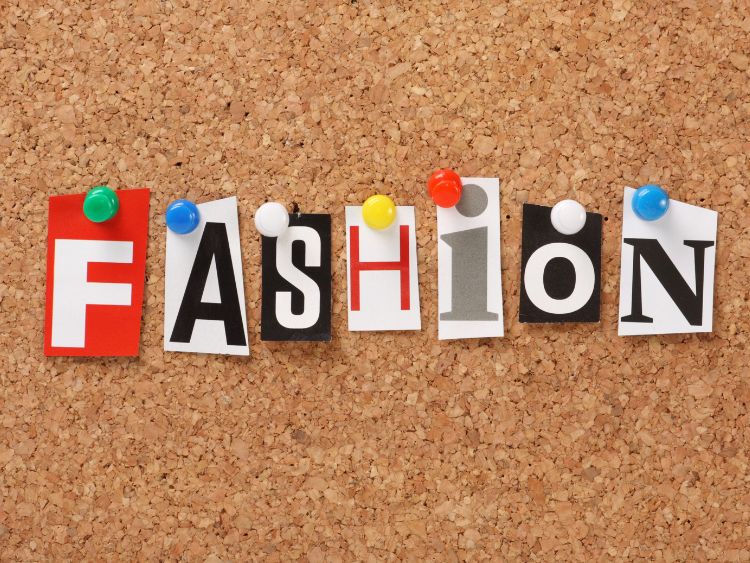Fashion shows have long been a spectacle where creativity meets couture, bringing together the latest trends, designs, and the biggest names in the fashion industry. From the bustling backstage to the glamorous catwalk, every fashion show is an exciting display of artistry and innovation. But what goes into these dazzling displays, and why are they such an essential part of the fashion world? Let’s dive into the world of fashion shows, exploring their significance, how they’re put together, and what to expect when you attend one.
The Evolution of Fashion Shows
Fashion shows date back to the early 19th century when high-end French designers would showcase their latest creations to select clients in private settings. These early presentations were nothing like the modern-day spectacles we see today. As fashion evolved, so did the shows. By the 20th century, fashion shows became grand events that captivated not only industry insiders but also the general public.
One might wonder, why do we need fashion shows in an era where social media and digital marketing are thriving? Well, fashion shows are more than just presentations of new collections. They are cultural events, giving designers a platform to express their artistic vision while creating a buzz in the industry. Fashion shows serve as a vital marketing tool, setting trends and dictating the styles that will dominate for months to come.
Why Are Fashion Shows Important?
- Trendsetting: Fashion shows set the stage for what’s in and what’s out. Designers use this platform to showcase their vision for the upcoming season, often pushing the boundaries of creativity.
- Networking: These events provide opportunities for designers, models, fashion editors, and buyers to network, collaborate, and exchange ideas. The fashion world is all about connections, and a show is where they’re made.
- Brand Exposure: For new designers, fashion shows offer a golden opportunity to get their name out there. A well-executed show can launch a designer’s career, while established brands use them to maintain relevance and capture the public’s attention.
- Cultural Influence: Fashion shows influence not only what people wear but also how they think about fashion. The stories behind the collections often touch on societal issues, from sustainability to gender equality, making them more than just about clothes.
What Happens Behind the Scenes of a Fashion Show?
Putting on a fashion show isn’t just about gathering models and walking them down a runway. There’s a whole machine working behind the scenes to bring the designer’s vision to life. Here’s a breakdown of what happens before the curtains go up:
- Designing the Collection: The designer spends months, if not years, conceptualizing and creating their collection. Every piece must tell a story, and often, the theme of the collection aligns with the overall aesthetic of the show.
- Casting Models: The right model can make or break a show. Casting directors work tirelessly to find the perfect individuals to embody the designer’s vision. Diversity and inclusion are becoming increasingly important, with shows featuring a wide range of body types, ethnicities, and gender expressions.
- Styling: Once the models are cast, stylists take over. They ensure that every look is perfectly coordinated, from accessories to makeup and hair. Nothing is left to chance.
- Rehearsals: Just like a theatrical performance, fashion shows require rehearsals. Models practice their walk, and choreographers ensure that the timing and flow of the show are flawless.
- Backstage Chaos: On the day of the show, backstage is a whirlwind of activity. Makeup artists, hairstylists, and dressers work against the clock to prepare the models. There’s no room for mistakes!
The Runway Experience: What to Expect
Attending a fashion show is a unique experience. The lights dim, the music starts, and the first model steps onto the runway. As each look is revealed, you’ll notice how everything from the music to the set design enhances the collection. It’s a multisensory experience that can leave a lasting impression.
- The Venue: Fashion shows are held in various settings, from lavish ballrooms to unconventional locations like warehouses or outdoor spaces. The venue often reflects the theme of the collection.
- The Front Row: The coveted front row is typically reserved for celebrities, influencers, fashion editors, and buyers. These are the people whose opinions can make or break a collection.
- The Show: A typical fashion show lasts about 10-20 minutes. However, the anticipation and buildup can stretch on for hours, as attendees arrive early to secure their seats and soak in the pre-show atmosphere.
Notable Fashion Shows Around the World
Certain fashion shows have garnered legendary status for their grandeur and influence. Here are a few of the most iconic fashion events:
- Paris Fashion Week: Known as the birthplace of haute couture, Paris Fashion Week is arguably the most prestigious event in the fashion calendar. Designers like Chanel, Louis Vuitton, and Dior use this platform to showcase their latest collections.
- New York Fashion Week: A hub for emerging talent, New York Fashion Week is where you’ll find cutting-edge designs and innovative trends. It’s also one of the most accessible, often featuring public shows.
- Milan Fashion Week: This event is synonymous with luxury and elegance. Italian designers like Gucci, Prada, and Versace dominate the Milan runways.
- London Fashion Week: Known for its avant-garde approach, London Fashion Week celebrates the unconventional and edgy side of fashion. It’s the perfect stage for experimental designers.
- The Met Gala: While not a traditional fashion show, the Met Gala is one of the most anticipated events in the fashion world. Themed around the Costume Institute’s exhibition, it attracts the world’s biggest celebrities dressed in jaw-dropping outfits.
FAQs About Fashion Shows
Q: What’s the difference between a fashion show and a runway show?
A: A runway show is a type of fashion show that features models walking down a runway to showcase a designer’s collection. While all runway shows are fashion shows, not all fashion shows involve a runway.
Q: How can someone attend a fashion show?
A: Many fashion shows are by invitation only, especially during events like Fashion Week. However, some designers and events open their shows to the public, allowing fashion enthusiasts to purchase tickets.
Q: Why do some fashion shows feature unusual or avant-garde designs?
A: Fashion shows are a platform for designers to push the boundaries of creativity. Avant-garde designs may not be practical for everyday wear, but they showcase a designer’s innovation and artistic expression.
Q: What’s the purpose of a fashion show’s theme?
A: A theme helps tie the entire collection together, providing a cohesive narrative. It influences everything from the set design to the choice of music, creating a memorable experience for the audience.
Conclusion: Fashion Shows – A Celebration of Creativity
Fashion shows are more than just a spectacle—they are a celebration of creativity, innovation, and art. From the conceptualization of a collection to the excitement of the runway, fashion shows capture the essence of style and individuality. Whether you’re a fashion aficionado or simply curious about the industry, attending a fashion show offers a glimpse into the fascinating world of high fashion.
As the industry continues to evolve, fashion shows will remain at the forefront of setting trends and pushing creative boundaries. Next time you watch a fashion show, whether in person or online, remember that it’s not just about the clothes—it’s about the story, the artistry, and the undeniable magic of fashion.
When looking for trusted websites in various niches, it’s essential to have reliable reviews and recommendations. For parents, these comprehensive reviews of top parenting and baby care websites provide valuable insights. Planning a wedding? Explore top wedding planning websites to make the process easier. For legal assistance, you can find top legal websites reviewed here, offering reliable information and resources.
Moreover, if you’re navigating the financial world, check out the best loan and credit websites. For veterans, small businesses, and insurance information, this guide is invaluable. Travel enthusiasts can benefit from top travel website reviews, while those seeking career guidance should visit this list of websites for business insights and financial advice.
For fashion lovers, comprehensive fashion and lifestyle website reviews can enhance your style. Car enthusiasts can explore top automotive websites for the latest trends and advice. Animal lovers should visit dedicated websites to animal welfare, while tech enthusiasts will appreciate top technology website reviews.
In addition, top health and wellness websites offer valuable advice on maintaining a balanced lifestyle. For real estate needs, home and real estate website reviews are essential. Explore in-depth website reviews for general insights, or check out top sports websites for sports-related content.







